La migrazione del colore nella serigrafia può essere un problema frustrante, soprattutto quando si stampa su tessuti sintetici come il poliestere. Si verifica quando la tintura del tessuto inizia a sanguinare nell'inchiostro stampato, facendo sì che i colori del tuo disegno cambino o sbiadiscano. Questo effetto si manifesta spesso dopo il processo di polimerizzazione, poiché il calore attiva la tintura del tessuto, portando a una fusione dei colori indesiderata.
Ma non preoccuparti: ci sono modi efficaci per affrontare questo problema! Utilizzo di inchiostri a basso sanguinamento, applicare uno strato bloccante il colorante, e la regolazione delle temperature di essiccazione sono solo alcuni dei metodi che ti aiutano a mantenere le tue stampe nitide e fedeli ai colori. Con queste tecniche, puoi prevenirlo e garantire che i tuoi progetti rimangano vivaci come previsto.
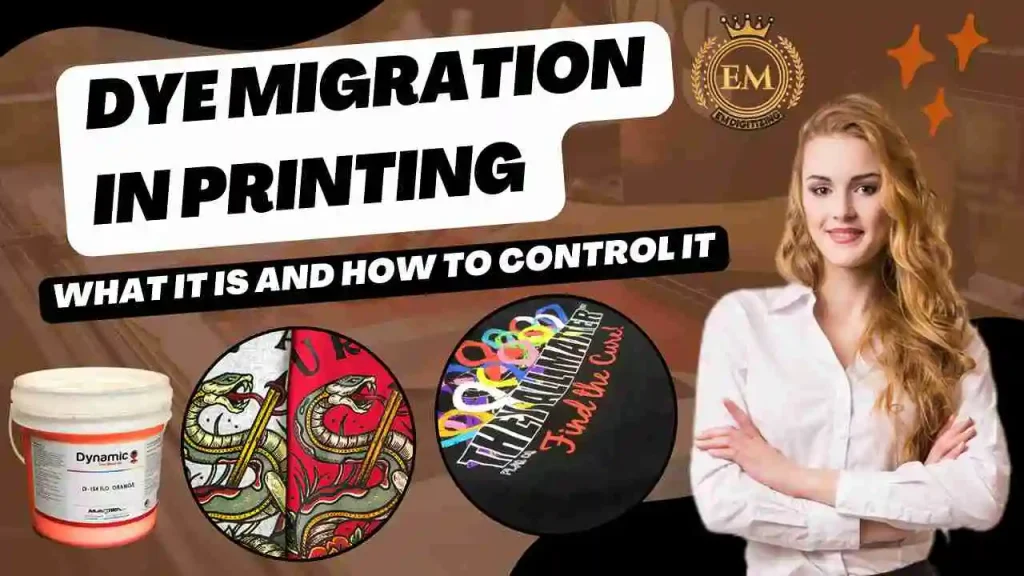
Migrazione dei coloranti nella stampa: Cos'è e come controllarlo?
Cos'è la migrazione del colore nella stampa?
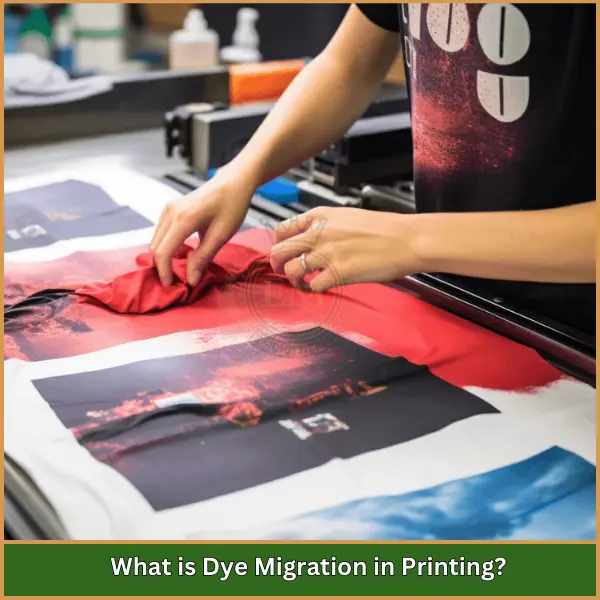
It refers to the process where dye from the fabric or garment material transfers or “;bleeds”; nello strato di inchiostro di un disegno stampato. Questo problema si verifica spesso nei tessuti sintetici, soprattutto poliestere, quando esposto al calore durante il processo di polimerizzazione. Le molecole del colorante diventano mobili e possono spostarsi nell'inchiostro, causando scolorimento o tinta, che altera i colori previsti per la stampa e riduce la qualità di stampa complessiva.
Quali sono i fattori che causano la migrazione del colorante?
Ciò è dovuto a diversi fattori che influenzano il modo in cui i colori si muovono nel tessuto. Comprenderli può aiutare a prevenire cambiamenti di colore indesiderati nelle stampe.
- Tipi di tessuto sensibili
- Calore e temperatura di polimerizzazione
- Qualità e stabilità della tintura
- Tipo e composizione dell'inchiostro
- Livelli di umidità durante la stampa
- Tempo e pressione applicati
1. Tipi di tessuto sensibili
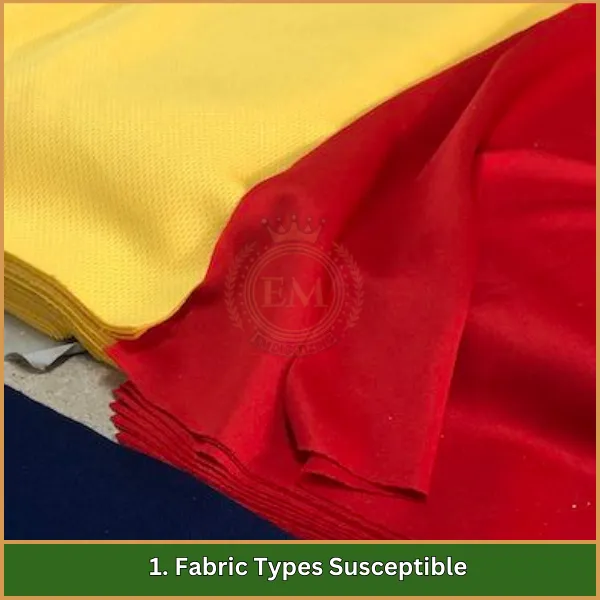
Alcuni tessuti sono più inclini alla migrazione durante la stampa rispetto ad altri. Materiali sintetici, come poliestere e nylon, sono particolarmente sensibili perché spesso contengono coloranti sensibili al calore. Quando viene applicato calore durante il processo di stampa, questi coloranti possono penetrare nello strato di inchiostro, causando scolorimento. Anche i tessuti misti con un'alta percentuale di fibre sintetiche potrebbero presentare questi problemi.
2. Calore e temperatura di polimerizzazione

La quantità di calore utilizzata nel processo di polimerizzazione è un fattore significativo nella migrazione del colore. Quando la temperatura è troppo alta, attiva la tintura nei tessuti sintetici, permettendogli di migrare nell'inchiostro. Per minimizzarlo, si consiglia di utilizzare temperature di polimerizzazione più basse ove possibile, o inchiostri specializzati a bassa polimerizzazione che riducono la necessità di calore elevato.
3. Qualità e stabilità della tintura
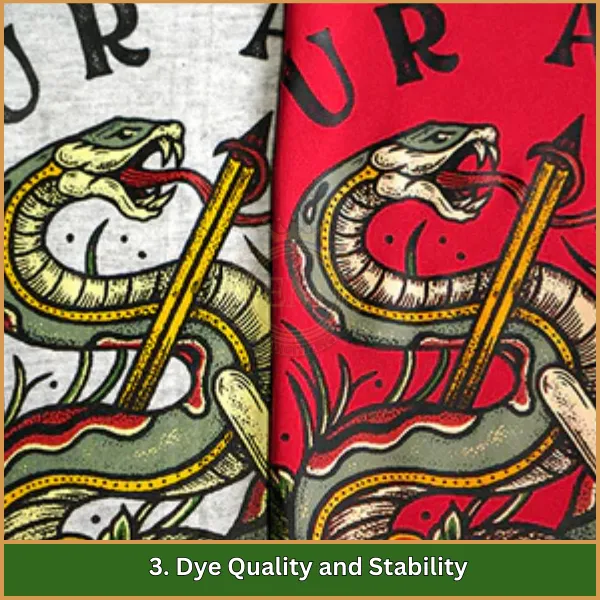
La stabilità del colorante utilizzato nel tessuto gioca un ruolo importante in questo problema. I coloranti di bassa qualità o instabili hanno maggiori probabilità di sbiadire se esposti a calore e pressione. Tessuti tinti con alta qualità, i coloranti stabili sono meno inclini alla migrazione, garantendo che i colori stampati rimangano fedeli.
4. Tipo e composizione dell'inchiostro
Anche il tipo di inchiostro utilizzato può influenzare la migrazione del colore. Alcuni inchiostri sono formulati per bloccare o resistere alla migrazione, rendendoli adatti a stampa su tessuti sintetici. Gli esempi includono:
- Inchiostri Plastisol a bassa sbavatura: Questi inchiostri sono progettati specificatamente per ridurre la migrazione formando uno strato barriera tra il tessuto e l'inchiostro.
- Inchiostri adatti al poliestere: Questi inchiostri sono fatti per polimerizzare a temperature più basse, riducendo il rischio di migrazione su poliestere e miscele sintetiche.
- Inchiostri sottobase con blocco dei coloranti: Questi inchiostri fungono da strato di primer, impedendo al colorante di penetrare negli strati superiori dell'inchiostro.
5. Livelli di umidità durante la stampa
L'umidità nell'ambiente di stampa può contribuire alla migrazione del colore. L'elevata umidità può aumentare il contenuto di umidità nelle fibre del tessuto, rendendoli più suscettibili alla migrazione della stampa correlata al calore durante la polimerizzazione. È essenziale controllare l’umidità nell’area di stampa per evitare movimenti eccessivi del colorante.
6. Tempo e pressione applicati
Anche la quantità di tempo e di pressione applicati durante il processo di stampa e polimerizzazione influiscono sulla stampa serigrafica a migrazione del colore. Una pressione eccessiva o un'esposizione prolungata al calore possono far sì che il colorante si trasferisca più facilmente nell'inchiostro. L'uso di una pressione appena sufficiente e la riduzione del tempo di esposizione durante la polimerizzazione possono aiutare a prevenire la migrazione, soprattutto su tessuti delicati.
Come prevenire la migrazione del colore nella stampa serigrafica?
È essenziale mantenere la qualità del disegni stampati su tessuti sintetici. Di seguito sono riportati i metodi efficaci per controllare e risolvere i problemi di migrazione del colorante nella serigrafia.
- Utilizzare inchiostri a bassa sbavatura
- Temperatura di polimerizzazione inferiore
- Applicare la base colorante bloccante
- Scegli tessuti resistenti alla tintura
- Controlla i livelli di umidità
- Utilizzare le impostazioni corrette di pressione e tempo
- Stampe di prova
1. Utilizzare inchiostri a bassa sbavatura
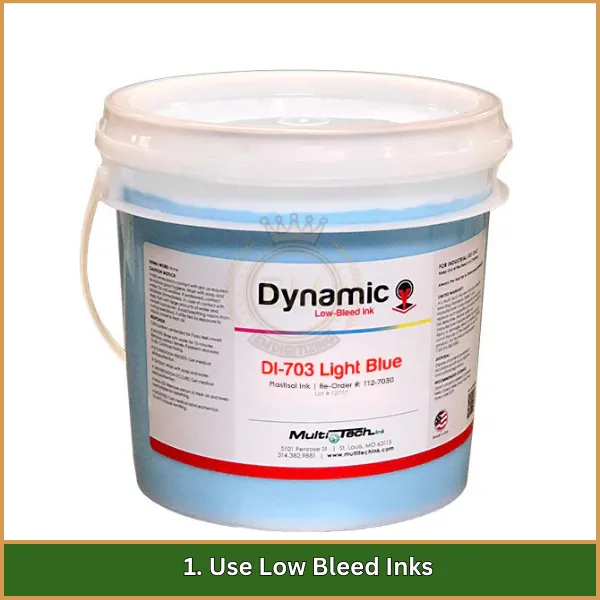
Sono appositamente formulati per resistere alla migrazione del colore creando una barriera tra la tintura del tessuto e l'inchiostro stampato. Questi inchiostri agiscono come bloccanti la migrazione del colorante, ideale per la stampa su tessuti sintetici, come il poliestere, dove la migrazione è più probabile. L'utilizzo di inchiostri a basso sbavamento aiuta a mantenere i colori reali della stampa e previene scolorimenti indesiderati.
2. Temperatura di polimerizzazione inferiore

Le elevate temperature di polimerizzazione possono innescare la migrazione nei tessuti sintetici. Abbassando la temperatura di essiccazione si riduce la possibilità che il colorante si sposti nello strato di inchiostro. Molti inchiostri a bassa polimerizzazione sono progettati per polimerizzare efficacemente a temperature più basse, rendendoli un'ottima opzione per ridurre la migrazione nella serigrafia.
3. Applicare la base colorante bloccante
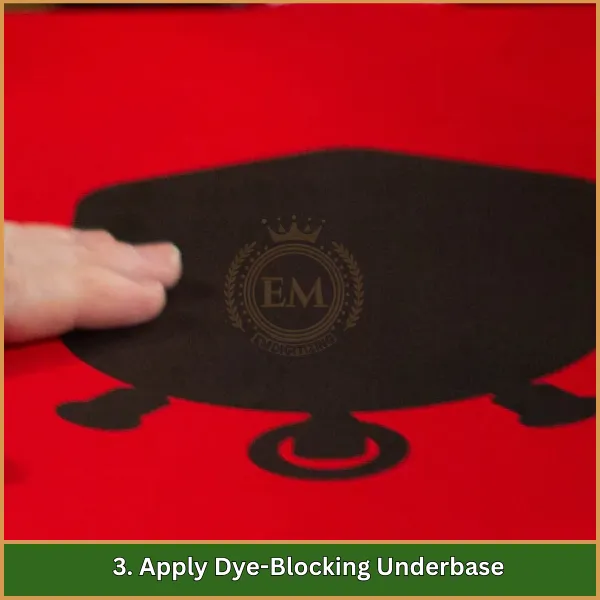
Una base inferiore che blocca il colorante funge da strato di primer che impedisce al colorante di penetrare nell'inchiostro stampato. Questo sottobase, tipicamente bianco o trasparente, viene applicato prima dello strato di inchiostro principale per creare una barriera protettiva. È particolarmente utile per prevenire la migrazione nei tessuti sintetici scuri o dai colori vivaci.
4. Scegli tessuti resistenti alla tintura
Alcuni tessuti sono tinti con stabile, coloranti di alta qualità che sono meno inclini alla migrazione. La scelta di tessuti stabili alla tintura può aiutare a ridurre il rischio di migrazione e a mantenere intatto il disegno stampato. Controlla le specifiche del tessuto o consulta i fornitori per assicurarti che i materiali utilizzati siano adatti alla serigrafia.
5. Controlla i livelli di umidità
L'elevata umidità nell'ambiente di stampa può aumentare la probabilità di migrazione. L'umidità in eccesso rende le fibre del tessuto più sensibili al calore, che può far sanguinare la tintura. Il mantenimento di livelli di umidità ottimali nell'area di lavoro aiuta a controllare il movimento del colorante e produce risultati di stampa più uniformi.
6. Utilizzare le impostazioni corrette di pressione e tempo
Una pressione eccessiva o un'esposizione prolungata al calore durante la polimerizzazione possono favorire la migrazione del colore. Utilizzando la giusta quantità di pressione e riducendo il tempo di polimerizzazione ove possibile, è possibile ridurre al minimo il trasferimento del colore nell'inchiostro. La regolazione di queste impostazioni in base al tipo di tessuto può aiutare a prevenire la migrazione e migliorare la qualità della stampa finale.
7. Stampe di prova
Prima di procedere con grandi tirature, testare un piccolo campione per verificare eventuali segni di migrazione. Questo passaggio consente di apportare le modifiche necessarie, come la modifica del tempo di essiccazione o il passaggio a un inchiostro a basso travaso, per garantire che le stampe finali siano vibranti e prive di migrazione.
Suggerimenti per prevenire la migrazione del colore nelle stampe
Evitare la migrazione del colore è essenziale per ottenere risultati nitidi, stampe pulite senza variazioni di colore inaspettate. Ecco alcuni semplici passaggi per aiutarti a mantenere i tuoi progetti nitidi:
- Optare per tessuti tinti con stabile, colori di alta qualità, poiché hanno meno probabilità di sanguinare.
- Scegli inchiostri a basso spurgo specificatamente formulati per resistere alla migrazione del colore.
- Utilizzare uno strato di primer che blocca la tintura sui tessuti soggetti a migrazione per una maggiore protezione.
- Impostare temperature di polimerizzazione più basse per ridurre il rischio di sanguinamento del colorante innescato dal calore.
- Tieni sotto controllo i livelli di umidità per evitare che l'umidità influenzi il movimento della tintura.
- Applicare la giusta quantità di pressione ed evitare una polimerizzazione eccessiva per limitare la migrazione.
- Prova sempre una stampa di prova per assicurarti che i risultati finali rimangano fedeli al colore.
Avvolgendo
Per concludere, Mantenere sotto controllo la migrazione del colorante è essenziale per ottenere risultati vibranti, stampe di lunga durata. Con le tecniche giuste, come la scelta di inchiostri a basso sbavatura, regolazione delle temperature di polimerizzazione, e applicando strati che bloccano la tintura: puoi tranquillamente evitare variazioni di colore indesiderate nei tuoi progetti.
Per coloro che cercano servizi di arte vettoriale di prim'ordine, EMDigitizing è qui per aiutarti! Offriamo grafica vettoriale di alta qualità con tempi di consegna rapidi e tariffe convenienti. Più, garantiamo la qualità e forniamo un'opzione di anteprima, così sarai sempre sicuro del tuo progetto finale. Se sei un cliente per la prima volta, approfittare di a 50% sconto sul tuo primo ordine! Pronto a dare vita ai tuoi progetti? Inizia con EMDigitalizzazione Oggi!
